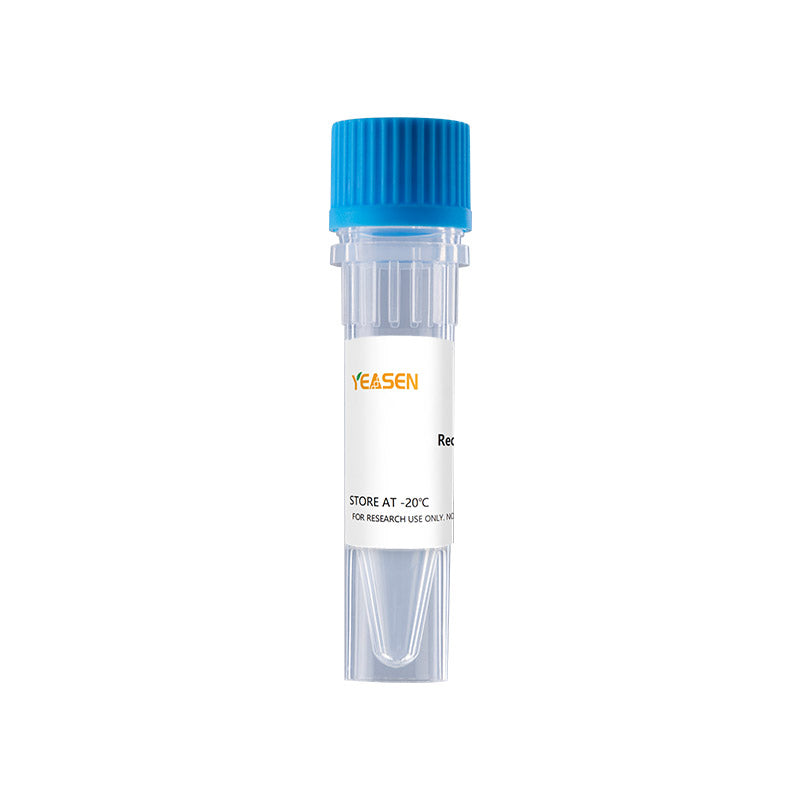Description
Fibroblast Growth Factor 18 (FGF-18) is a 20 kDa protein that plays an important role in skeletal development and bone homeostasis. Mature mouse FGF-18 shares 99% amino acid sequence identity with human and rat FGF-18. It is expressed in embryonic somites and the neural fold, adult lung, cerebellar and hippocampal neurons, hair follicle root sheath cells, and osteogenic mesenchymal cells. FGF-18 binds to FGF R2c, FGF R3c as well as the Golgi protein GLG1 and induces the proliferation of astrocytes and microglia, vascular endothelial cells, dermal fibroblasts, papilla cells, and keratinocytes. FGF-18 is required for normal skeletal development. It recruits osteoclasts and osteoblasts to the growth plate, promotes osteoclast formation and function, inhibits osteoblast differentiation, promotes skeletal vascularization, and induces chondrocyte hypertrophy and cartilage matrix formation.
Product Properties
|
Synonyms |
zFGF5 |
|
Accession |
O89101 |
|
GeneID |
14172 |
|
Source |
E.coli-derived Mouse FGF-18, Glu28-Gly207. |
|
Molecular Weight |
Approximately 21.0 kDa. |
|
AA Sequence |
EENVDFRIHV ENQTRARDDV SRKQLRLYQL YSRTSGKHIQ VLGRRISARG EDGDKYAQLL VETDTFGSQV RIKGKETEFY LCMNRKGKLV GKPDGTSKEC VFIEKVLENN YTALMSAKYS GWYVGFTKKG RPRKGPKTRE NQQDVHFMKR YPKGQAELQK PFKYTTVTKR SRRIRPTHPG |
|
Tag |
None |
|
Physical Appearance |
Sterile Filtered White lyophilized (freeze-dried) powder. |
|
Purity |
> 95% by SDS-PAGE and HPLC analyses. |
|
Biological Activity |
The ED50 as determined by thymidine uptake assay using FGF-receptors transfected BaF3 cells is less than 0.5 ng/mL, corresponding to a specific activity of > 2.0 × 106 IU/mg. Fully biologically active when compared to standard. |
|
Endotoxin |
< 1.0 EU per 1μg of the protein by the LAL method. |
|
Formulation |
Lyophilized from a 0.2 µm filtered concentrated solution in PBS, pH 7.4, 500 mM NaCl. |
|
Reconstitution |
We recommend that this vial be briefly centrifuged prior to opening to bring the contents to the bottom. Reconstitute in sterile distilled water or aqueous buffer containing 0.1% BSA to a concentration of 0.1-1.0 mg/mL. Stock solutions should be apportioned into working aliquots and stored at ≤ -20°C. Further dilutions should be made in appropriate buffered solutions. |
Shipping and Storage
The products are shipped with ice pack and can be stored at -20℃ to -80℃ for 1 year.
Recommend to aliquot the protein into smaller quantities when first used and avoid repeated freeze-thaw cycles.
Cautions
1. Avoid repeated freeze-thaw cycles.
2. For your safety and health, please wear lab coats and disposable gloves for operation.
3. For research use only!
Payment & Security
Your payment information is processed securely. We do not store credit card details nor have access to your credit card information.
Inquiry
You may also like
FAQ
The product is for research purposes only and is not intended for therapeutic or diagnostic use in humans or animals. Products and content are protected by patents, trademarks, and copyrights owned by Yeasen Biotechnology. Trademark symbols indicate the country of origin, not necessarily registration in all regions.
Certain applications may require additional third-party intellectual property rights.
Yeasen is dedicated to ethical science, believing our research should address critical questions while ensuring safety and ethical standards.

